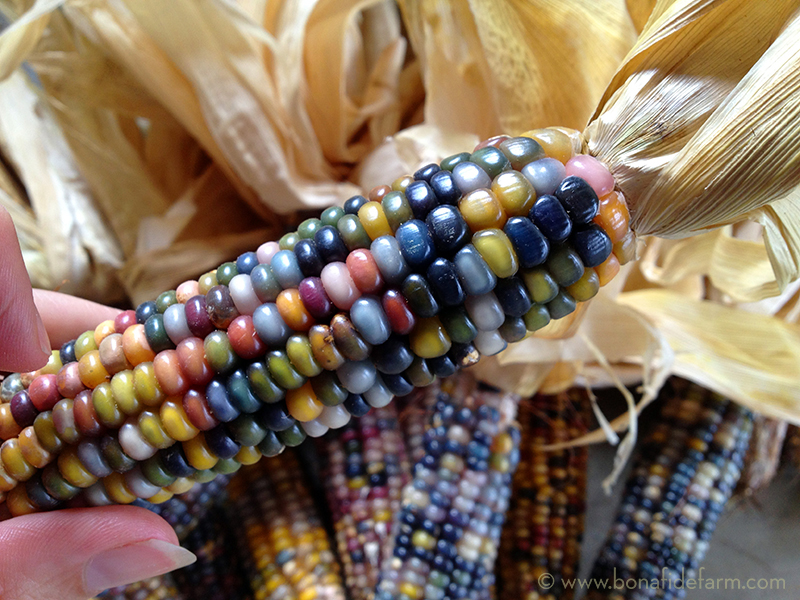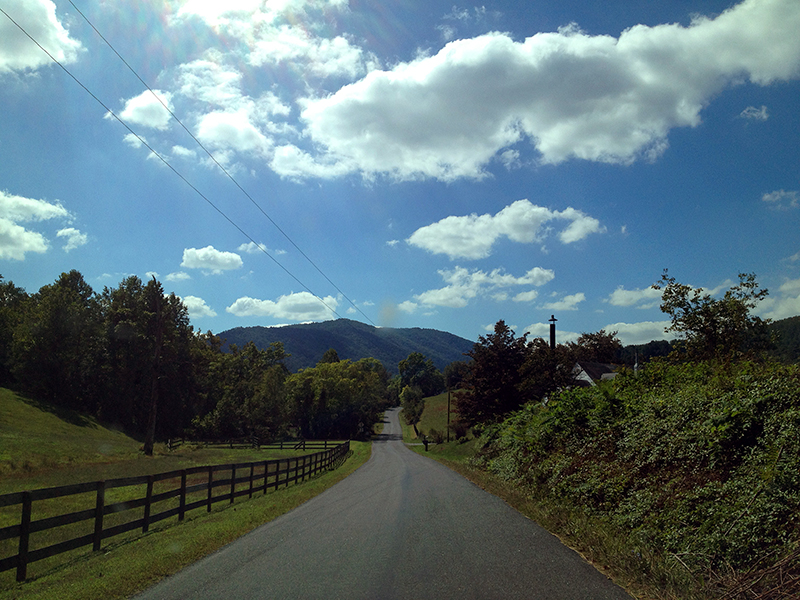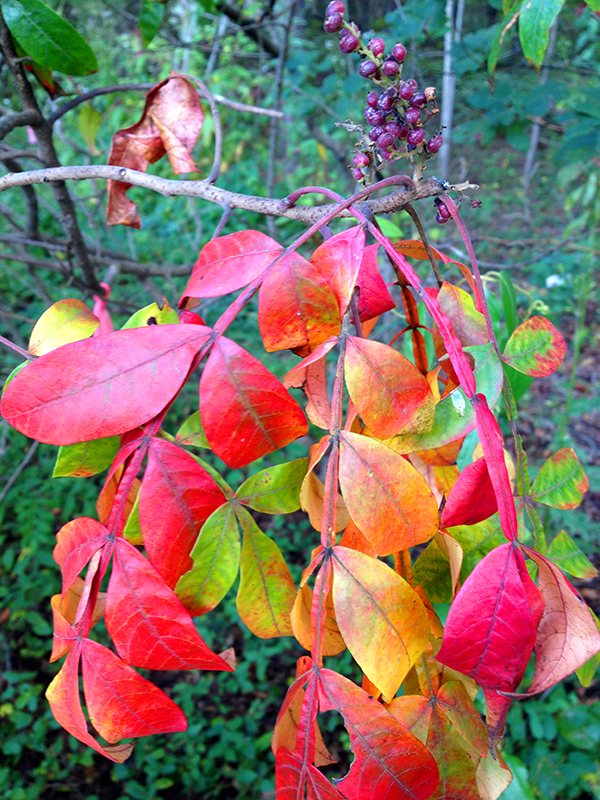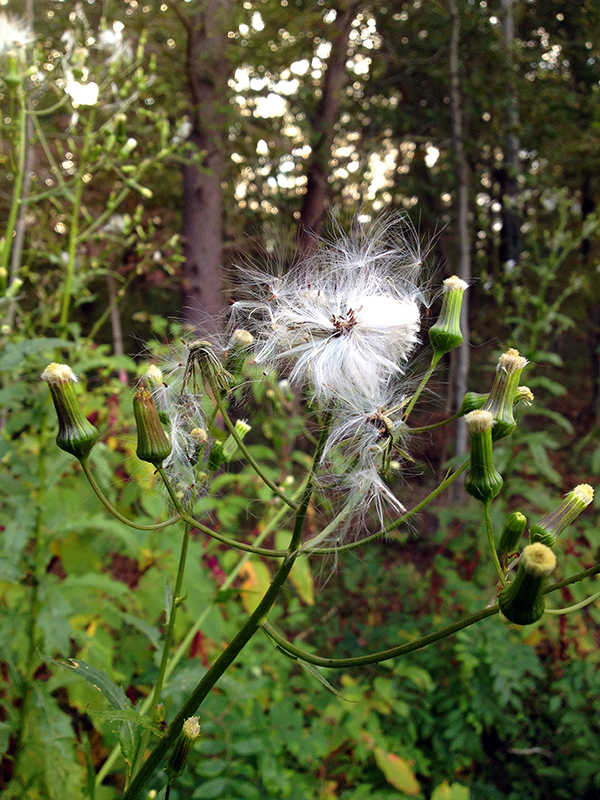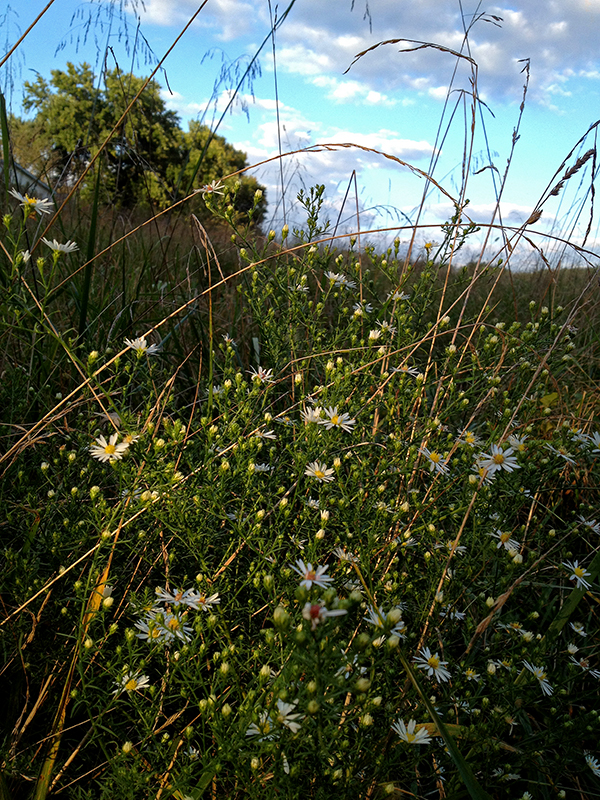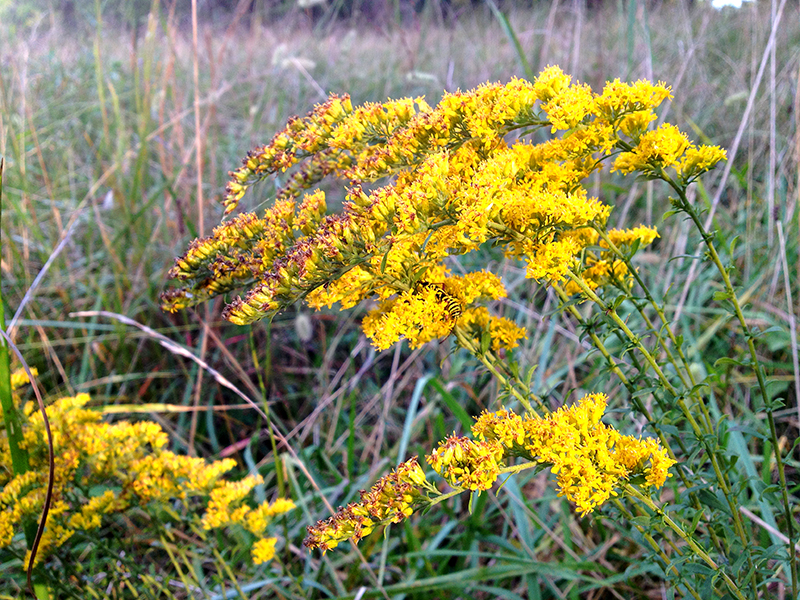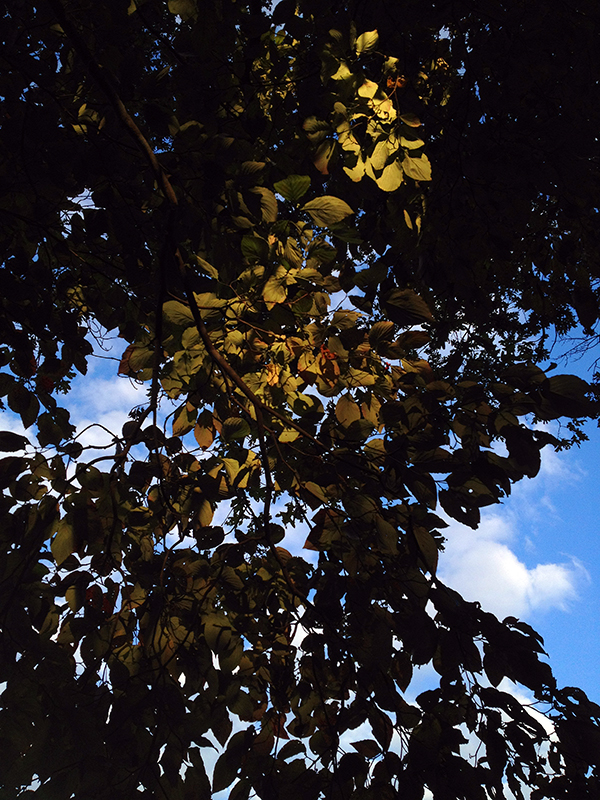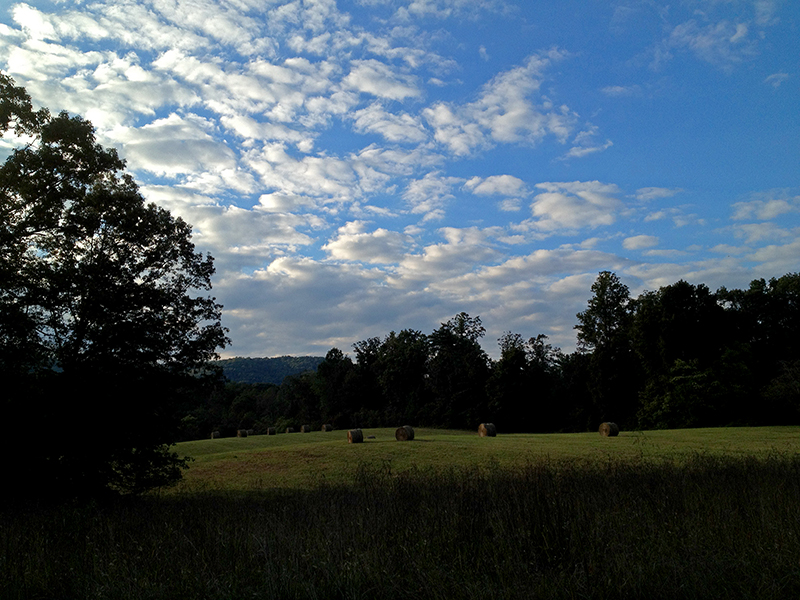June 26th, 2014 §
This is the first harvest of summer 2014—a few squash and zucchini that managed to outrun the oncoming squash bugs, some hot peppers, basil and other herbs, and five Sun Sugar tomatoes. Tomatoes before the fourth of July—not bad considering our long, cold spring.
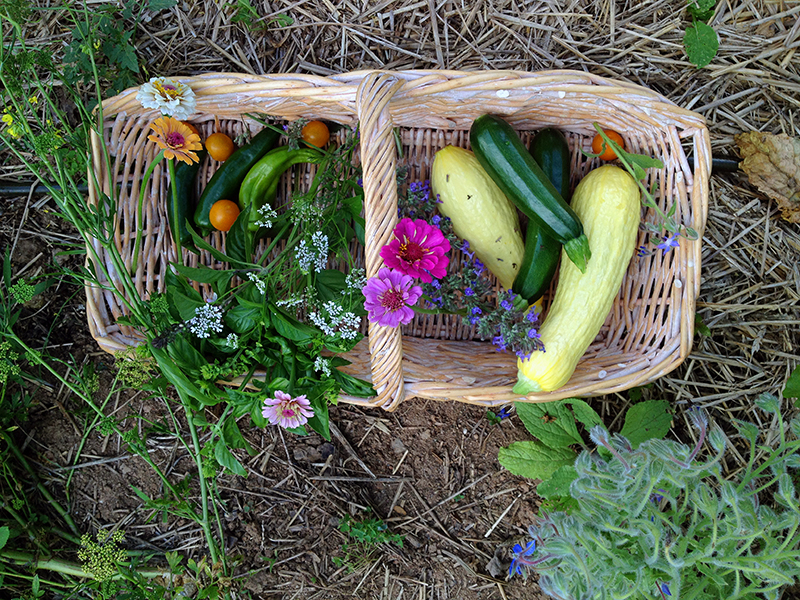
The zinnias are just coming on, and I bet tomorrow I will see the first cosmos bloom. It is great to be back in the cutting flower business. From now until frost there will be homegrown bouquets all around my house. 
Such bounty calls for a celebration with fire. As I didn’t do much for the Solstice this past weekend, I fired up the grill to cook a first harvest/Solstice feast as thunder bounced around the mountains. I just got the grill a few weeks ago, a gift from my mom, and it’s been a steep learning curve to understand this entirely new way of cooking. It’s a good challenge, and one I needed as my culinary selfeducation had grown stagnant. It feels wonderful to push myself, to make mistakes, have “eureka” moments and accidental epiphanies, and at the end of it all, if I’m lucky, dinner.
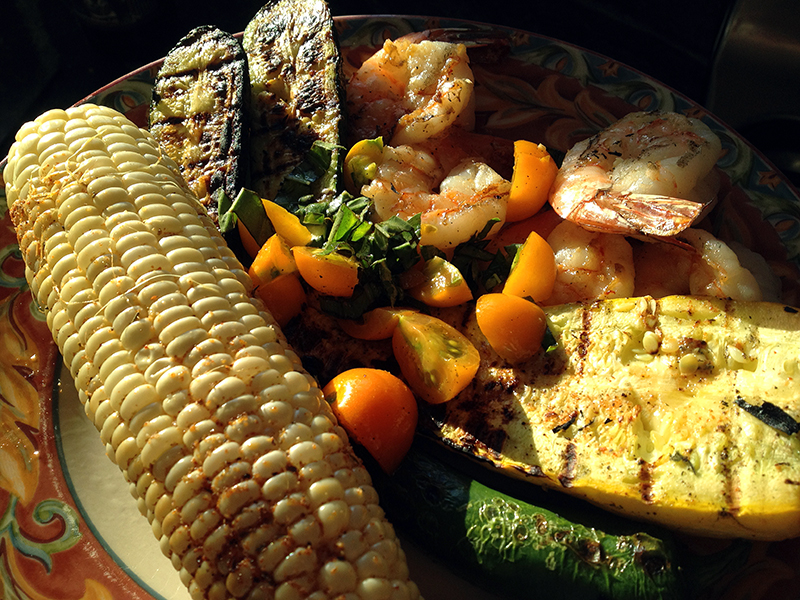
And what a dinner it was. Garlic shrimp, my veg, some corn slathered with butter and seasonings and wrapped back up in its husk to grill. A simple, perfect salsa made with my five pretty gold tomatoes, basil, salt, pepper and olive oil. These squash were on a whole other level from the pallid supermarket varieties I grilled last week. Call me a tree-hugging hippie, but I can taste a difference when I eat something I planted in April as a two-leafed seedling, nurtured and protected, and finally harvested within twenty minutes of consuming. Vegetables taste alive, almost meat-like in their nutrition and vitality. They go straight to my brain.
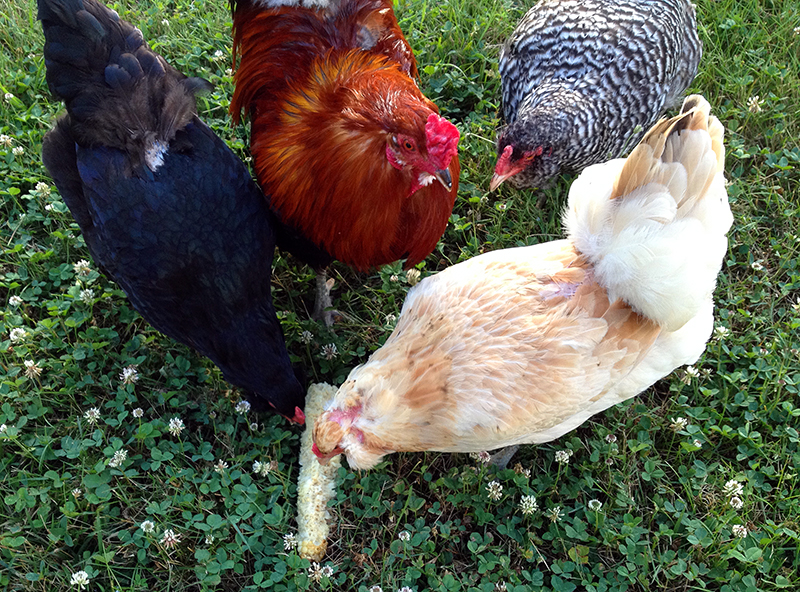
And, nothing is wasted.
September 25th, 2013 §
Here’s just a selection of the Glass Gem corn I grew this summer. As you can see, the range of colors is incredibly wide, both within each cob and between different ears. Glass Gem is a color lover’s dream. There’s something here for everyone, whether you prefer your corn in nursery pastels, sophisticated navy, screaming magenta, classic yellow, or my favorite, all mixed up teal green, purple, turquoise and pink.
These photos aren’t digitally altered, nor did I use any special shooting setup—this really is what this corn looks like. I just snapped a few shots with my phone as I lay the corn out on the garage floor after shucking.
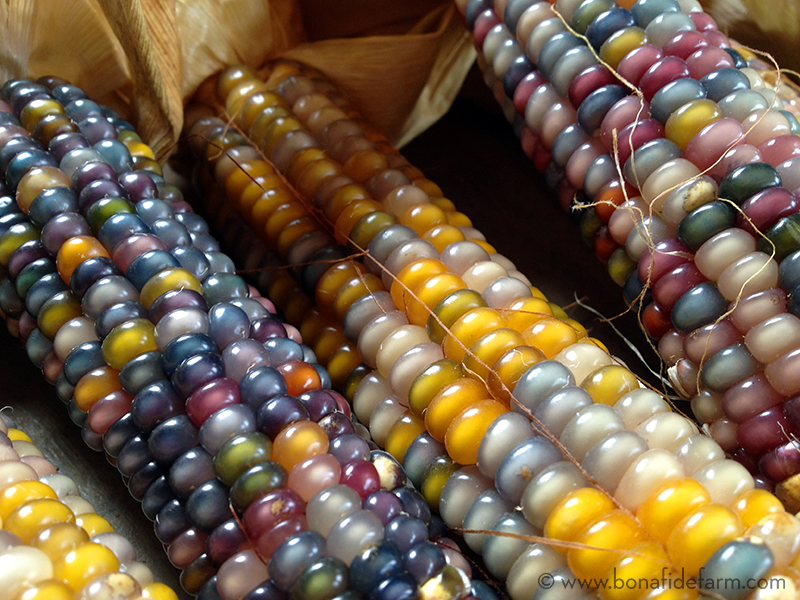
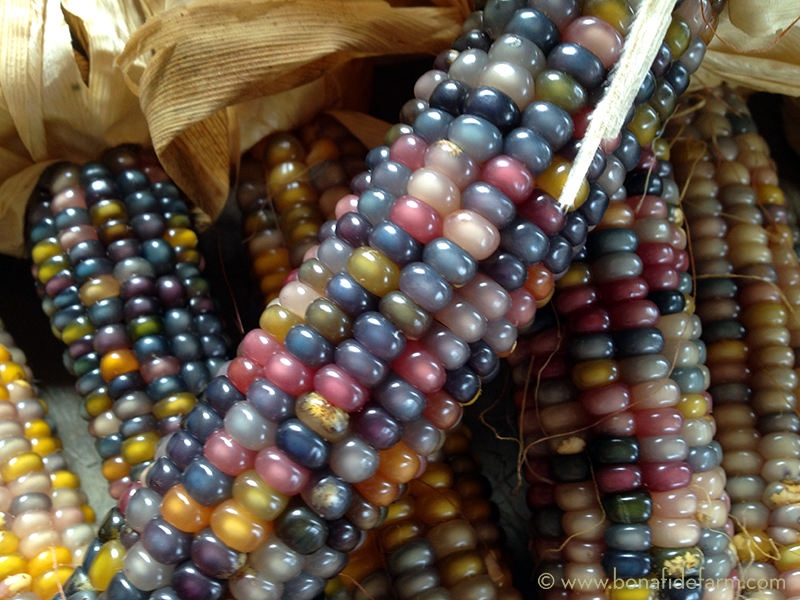
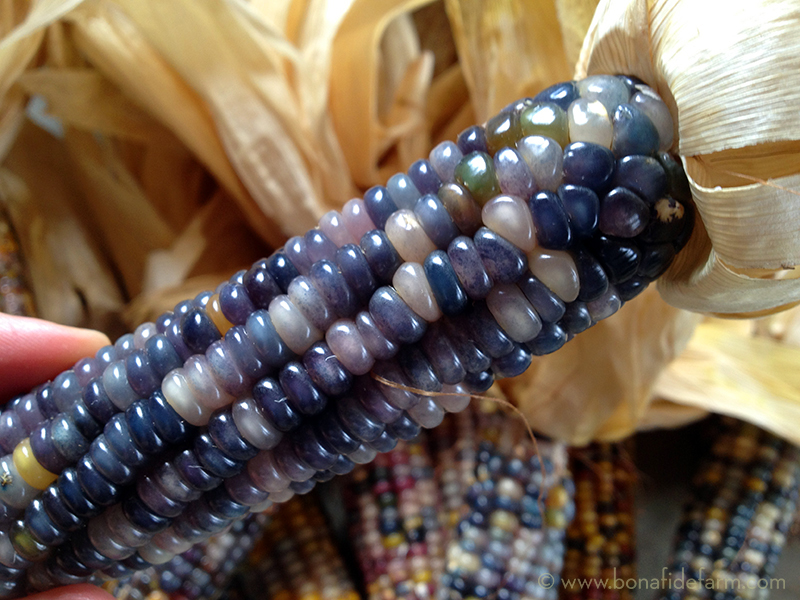

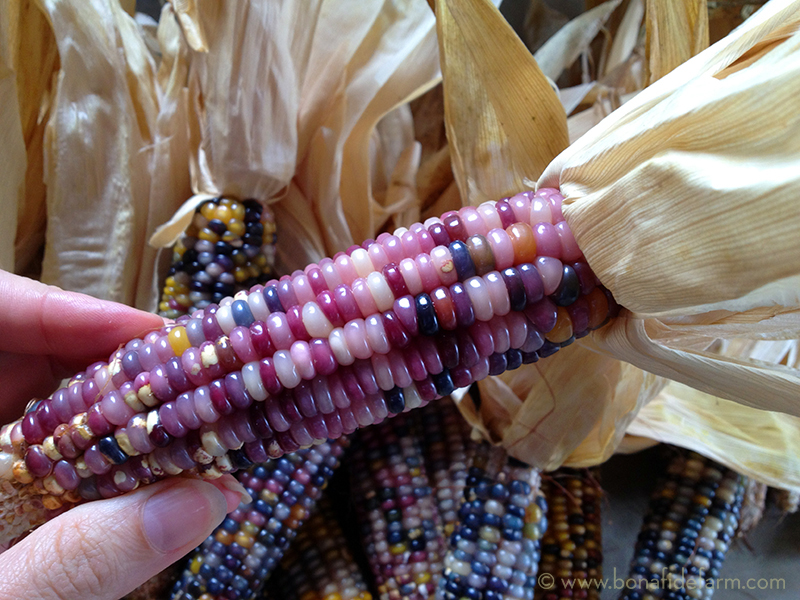
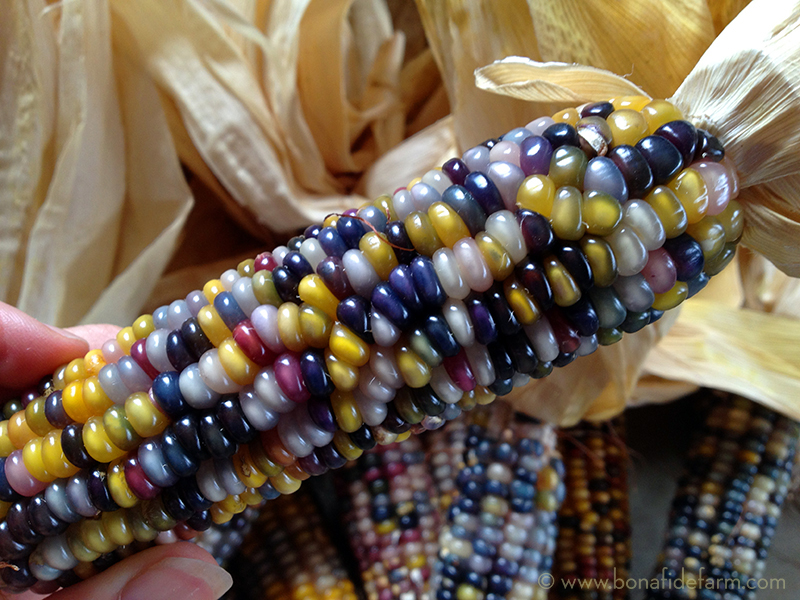
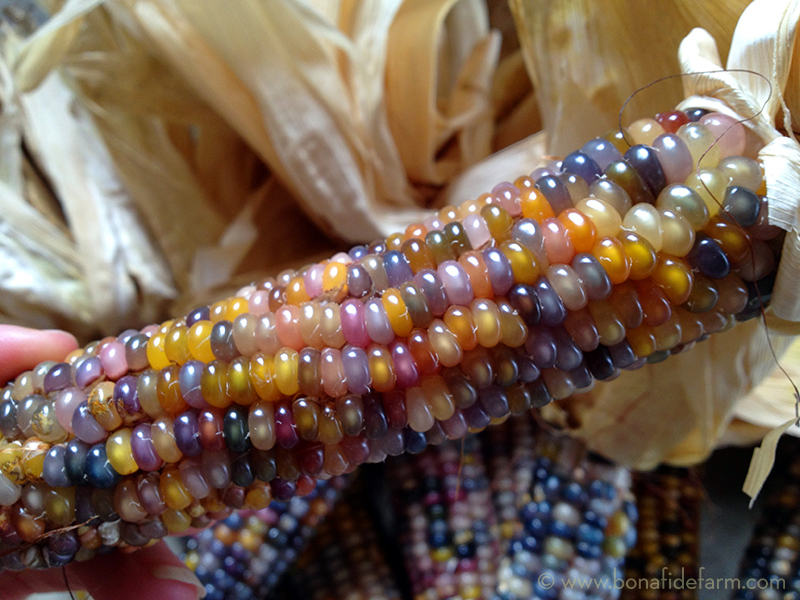
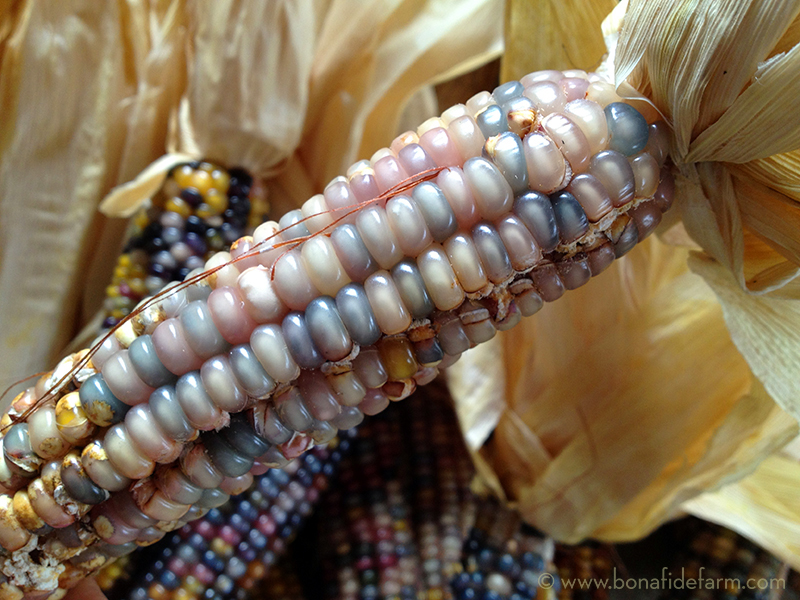
To read about the entire 2013 Glass Gem corn experiment, please visit:
September 24th, 2013 §
Once I had all the Glass Gem corn picked, it was time for the best part: opening each ear to reveal the multicolored kernels held within. I set up a little shucking station in the garage and got to work. It was kind of like Christmas as each ear exposed a new and different surprise. I separated and saved the best looking corn silk, in the basket below, for tea.
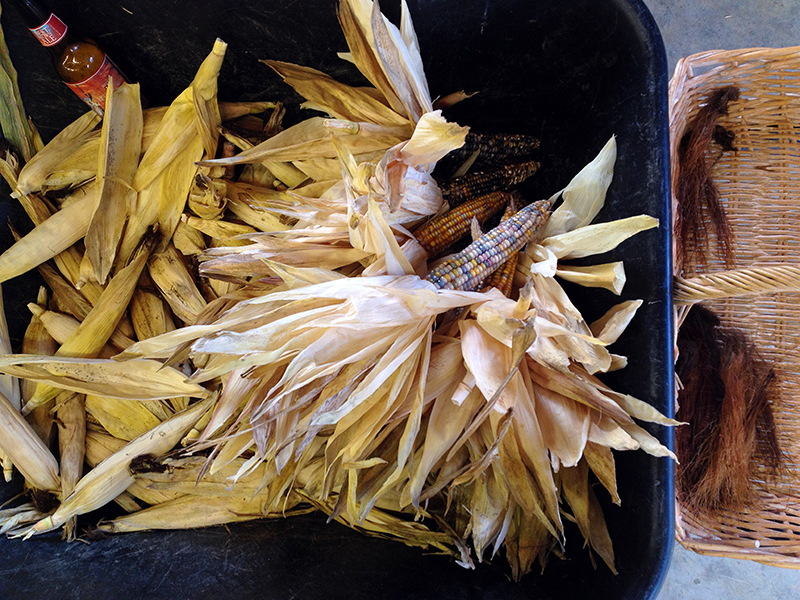
Of course I had company, though one companion grew pretty bored when the shucking stretched into a multihour endeavor.
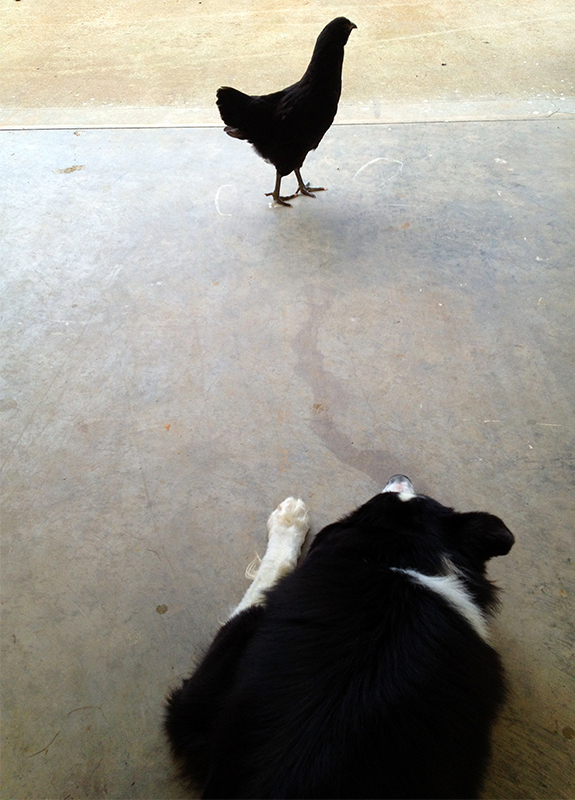
Shucking more than 100 ears, plus the time required to marvel at each beautiful ear, added up as I worked through sundown and into the evening. The rest of the crew got more and more curious as I lined the shucked cobs up on the garage floor, sorting them by size and condition. I was very pleased to see what I consider to be pretty good pollination and kernel set in most of the ears. I found only one insect, a little worm, in all 100+ ears, which seems remarkable to me given how much I struggle with bugs on some of my other crops. Perhaps I have the bluebirds and their nightly visits to the corn patch to thank?
A few of the ears contained kernels that looked as though they were starting to pop. I will have to do more research to figure out what causes that. But in all, I was pretty pleased with my harvest. Maybe it’s just beginner’s luck, or the blessing of an unusually rainy summer, but it’s not too bad for my first corn-growing experience!
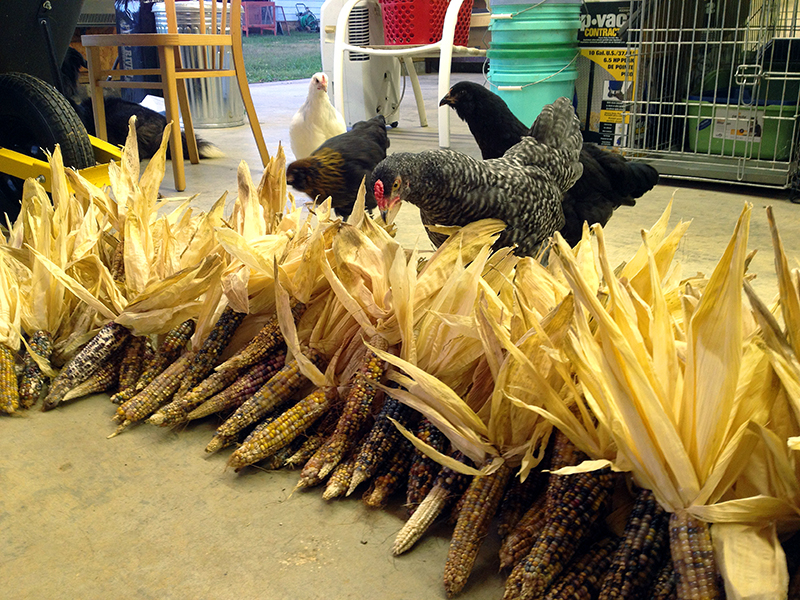
Though they were intrigued, the chicks hadn’t yet figured out that corn is one of the most delicious chicken treats around. And this wasn’t just any corn—it was the famous Glass Gem!
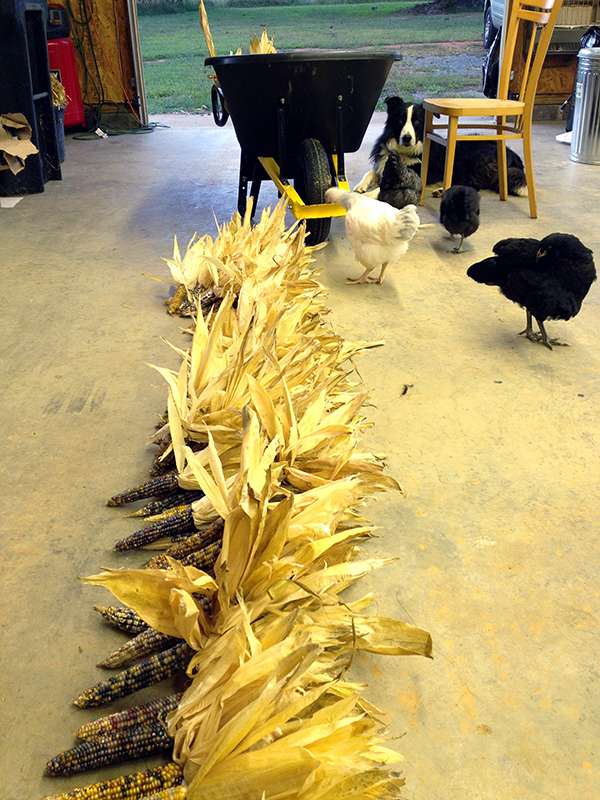
Up next, a closer look at the Glass Gem harvest…and all the pretty pictures you’ve been waiting for!
September 22nd, 2013 §
September 21st, 2013 §
During the last few weeks, the Glass Gem corn—my summer experiment—has begun to dry out and turn brown.
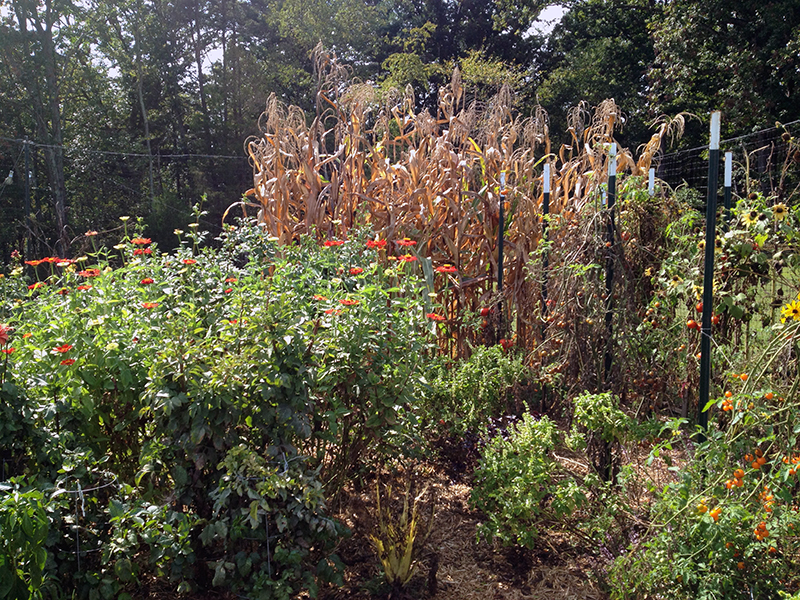
I picked a few test ears and determined that it was time to harvest. But first I needed to fight my way through a wildlife gauntlet to claim my jewel-toned treasure. First, a black widow protected the garden entry, tucked up inside her cinderblock lair.

Not only was she guarding the garden, she was also guarding a few egg sacks. Mother and young were slayed with scissors and wasp spray.
Then I re-engaged a known enemy. A couple of weeks ago, while harvesting my test ears, I was stung on the right wrist by a wasp. Turns out it was one of a gang that had built a little fortress hidden on the underside of one of the corn leaves.
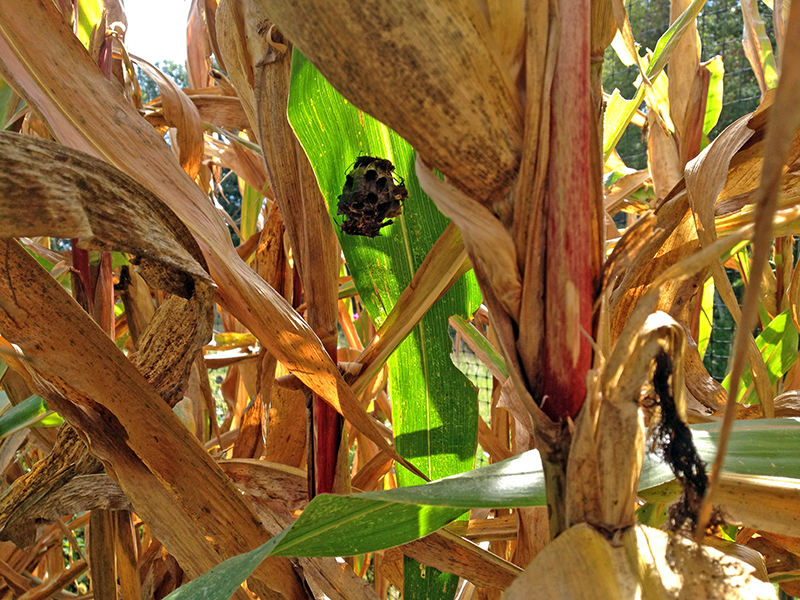
With throbbing wrist I had hastily retreated to ice packs and antihistamines, conceeding round one to the wasps. My entire arm ached for a week, feeling like it was broken deep inside.
But now I was back and better prepared. Before the wasps could mount a defense, I shot them all with a strong stream of wasp spray. They fell to the ground, writhing. A quick perimeter check found no more wasp nests, and the coast was clear for me to begin my plunder.
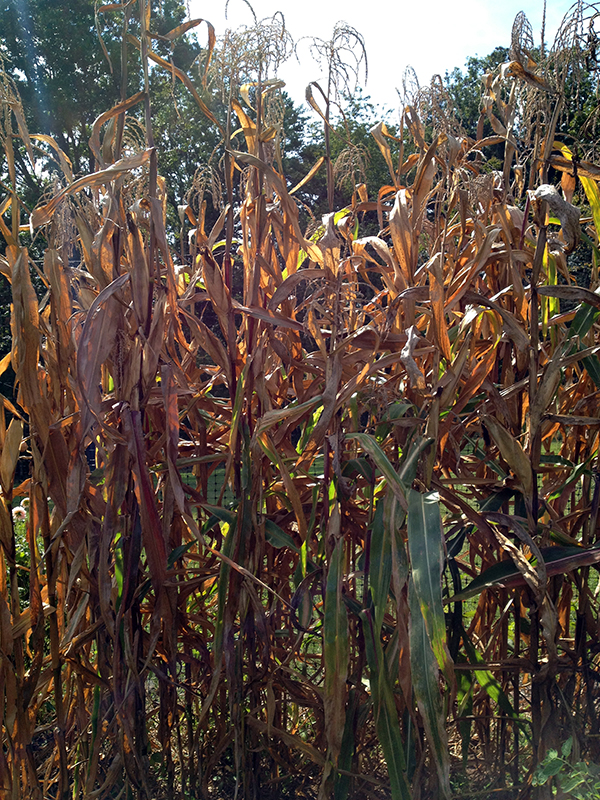
Harvesting corn is no fun. Between the fear of more hidden stinging creatures, and the claustrophobic feeling induced by threading myself amongst the close-spaced cornstalks, I wanted to get it over with as soon as possible. I wrenched the ears off the stalks, and cut the ones that didn’t come away easily with my pruners. I tossed them all in a pile to be sorted later.
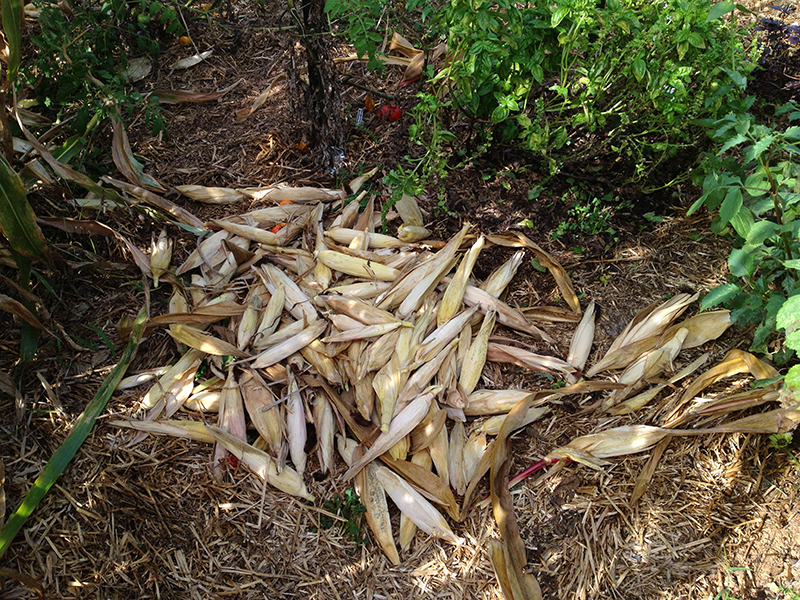
Just when I was about done and feeling like I was home free, I encountered my final challenger. I reached into the stand of cornstalks and as I did felt a burning, stinging sensation travel up my arm from wrist to elbow. I screamed and flipped over a leaf to see this guy, just before I ran to the outside hose to douse my arm in cold water.
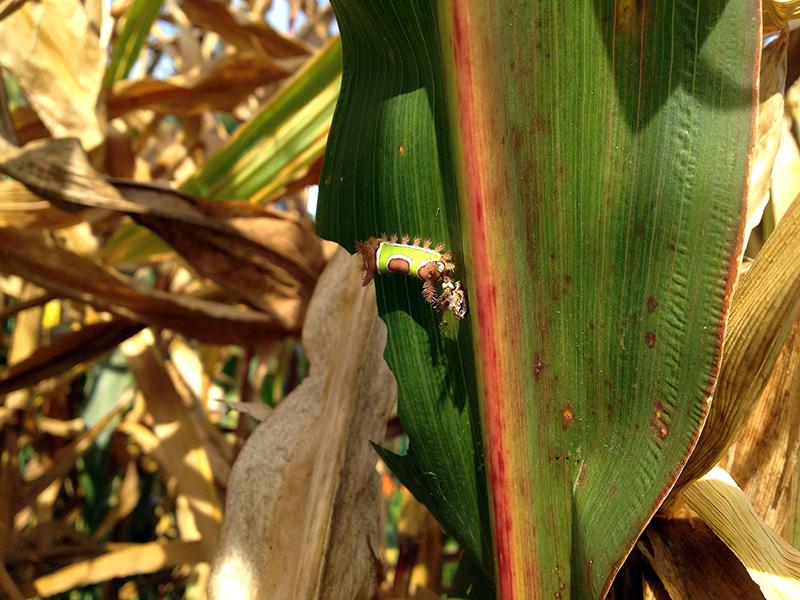
Meet my Cerberus, a saddleback caterpillar, its spiked protrusions covered with urticating hairs that had just set my arm on fire. A fitting final foe for what had been a hellish harvest.
But now came the fun part: opening each ear to see the multicolored surprises held within…
August 28th, 2013 §
I took my hops in to the house and divided them up onto two baking sheets. My oven has a pretty convenient dehydrate feature, so I figured I’d give it a try. It basically just maintains the oven temperature at 120 degrees while running the convection fan.
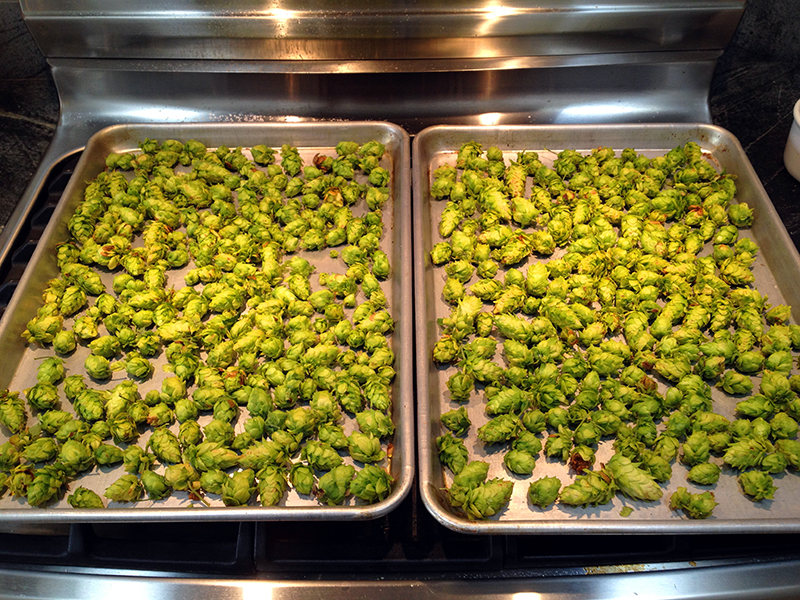
After I took this photo I slipped a couple of wire cooling racks under the cones to elevate them off the baking sheets. I figured it would improve air circulation and thus drying.
It took a couple of hours for the cones to get lighter and more crispy. During this time the house smelled so delicious.
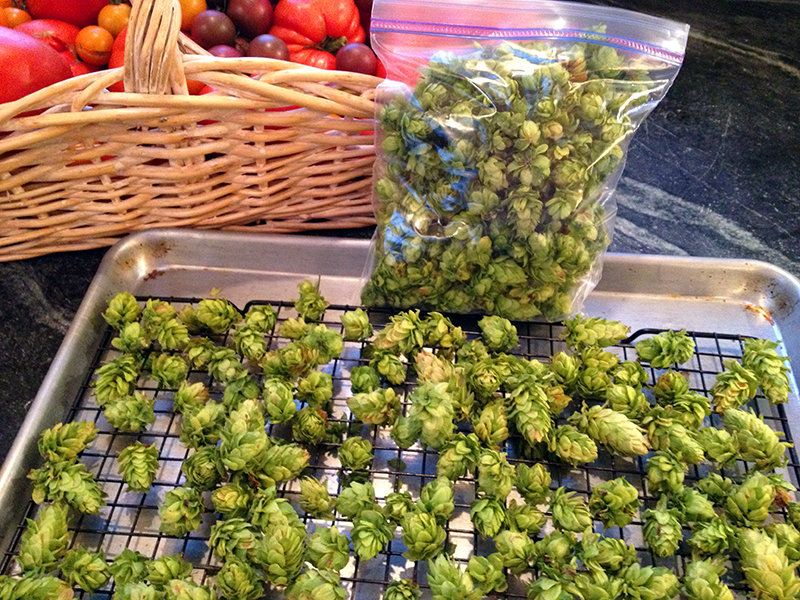
When I judged the hops dry enough, I packed them into quart zip-top bags and used the old straw trick to suck the air out around them. Then I tossed them in the freezer. I ended up with two quart bags of harvest.
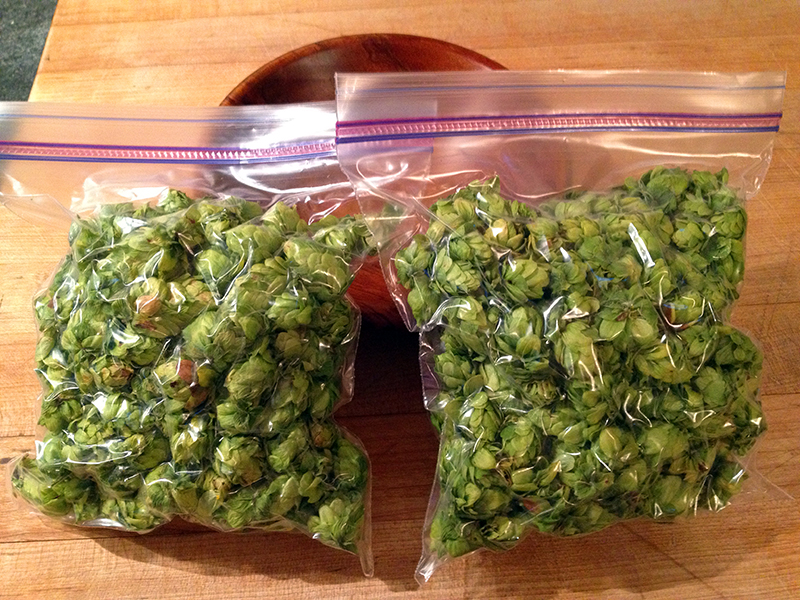
I also took a few of the hops and packed them in a glass jar with 100 proof vodka to make a tincture. Hops tincture is relaxing, soothing to the digestive system, sedative, and good for insomnia. I will let the mixture sit for six weeks and then strain out the hops and bottle the tincture. This is the first medicine I have made from home-grown material, and it feels pretty wonderful to be working with plants in this new way.
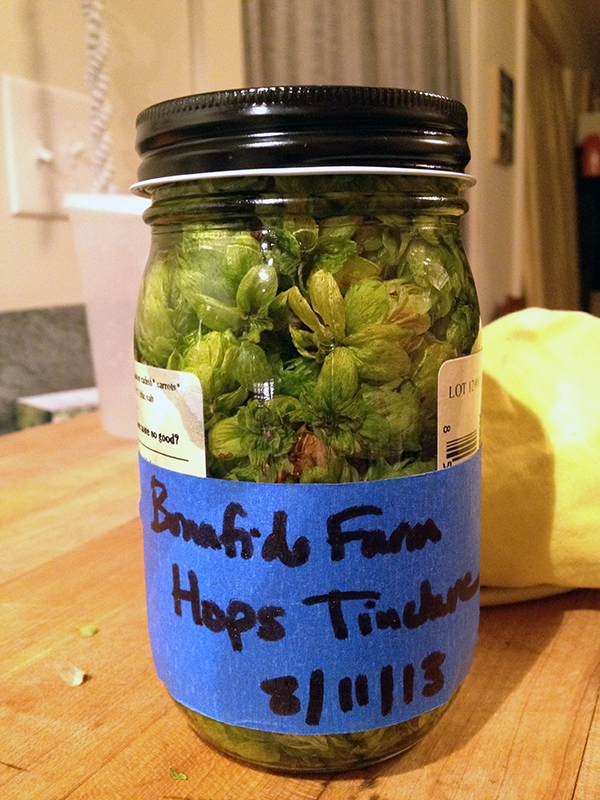
And that concludes the 2013 hops harvest. When the frost kills back the top growth on the hops plants, I will cut it off to compost and mulch the roots well. Then next year I will restring the ropes and expect an even bigger harvest if all goes well.
I found hops to be relatively maintenance free. I didn’t give them any supplemental water, thanks to our abnormally wet summer, nor did I give them any extra fertilizer. Deer left them alone. The hops did attract stink bug nymphs during the last few weeks, but the insects didn’t appear to damage the plants or the cones. I’m going to go ahead and call the first year of hops experiment a success.
I don’t have plans yet for the frozen hops. They may make their way into tea, or maybe beer. We’ll see!
August 27th, 2013 §
You may remember I planted my first Celeste hops back in April. It was pretty simple, involving amending some soil and running a couple of ropes from the ground up the the eaves of the garage.
It took a few weeks for the hops to emerge from the soil, but once they did they steadily grew until it was time to harvest two weeks ago.
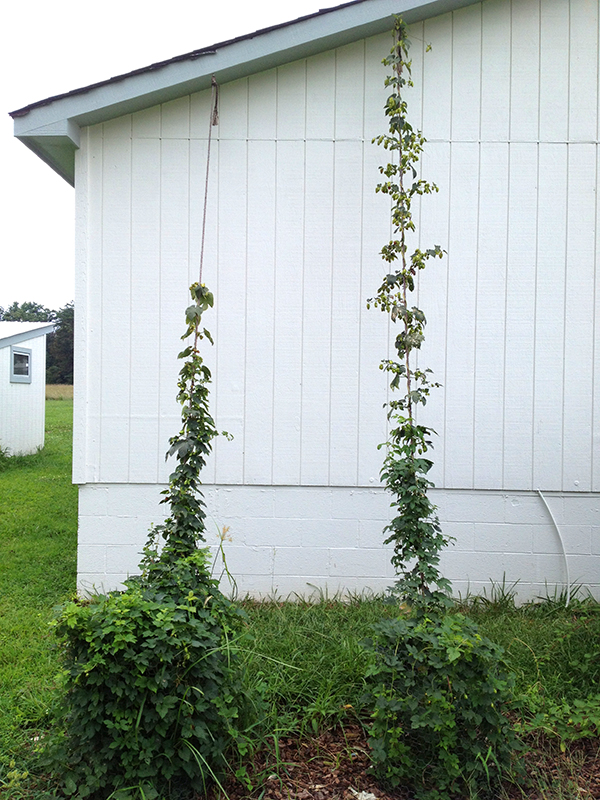
I watched a few online videos to figure out that the time was right, and even though my hops cones weren’t quite as large as some I’d seen online, other signs suggested they were ready. They felt crisp and springy to the touch, had deep golden lupulin glands within, and bits were starting to turn brown. And, I was due to leave the farm for a couple of weeks and knew that if I didn’t get them down, they’d all be ruined when I returned. So harvest time it was!
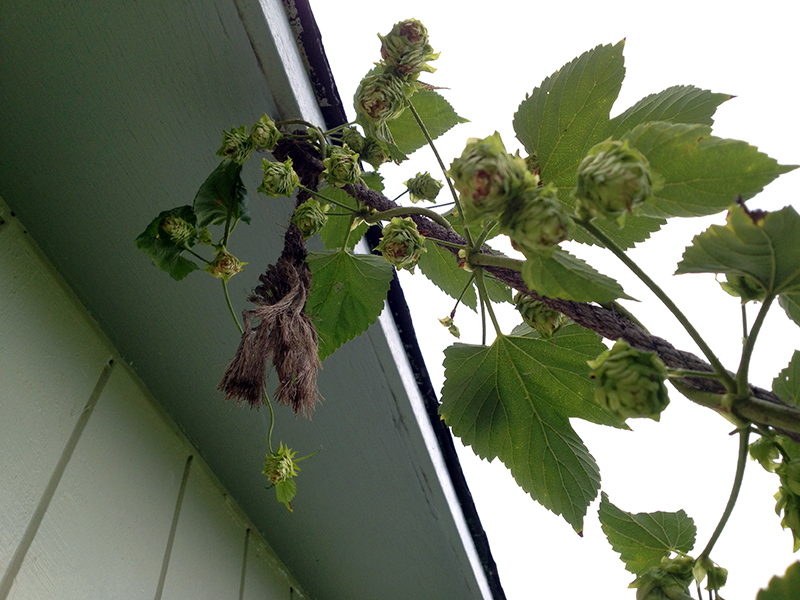
I gathered the ladder and my harvest basket and set to work cutting down the rope that held the more vigorous of the two vines.
Once I had it on the ground it was easy work to strip the cones off the plant, and they left telltale yellow resin (deliciously hop-smelling!) on my hands.
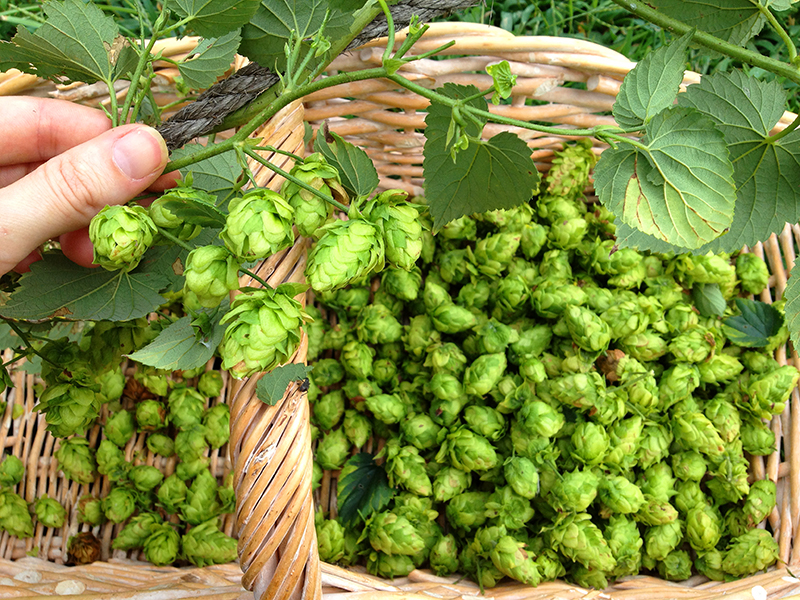
Remember that dogs will die if they ingest hops, so if you’re growing them around pets take extra care. I know my dog has pretty good judgment about what he eats, but even so I watched him closely while harvesting and I made sure to not leave any hops cones on the ground and picked up all loose leaves and plant pieces.
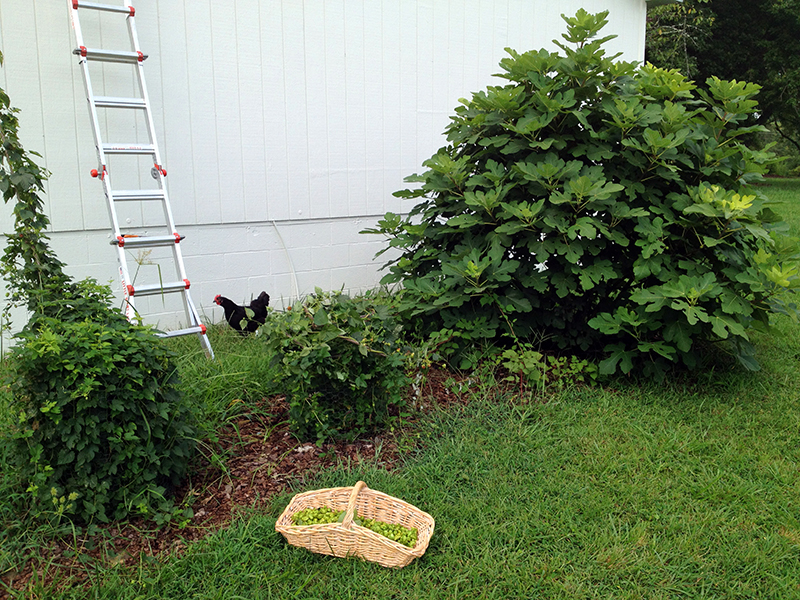
Once I had the cones picked off, I wound the bines up so that the leaves could continue photosynthesizing until frost. I figured that as the first year is really all about root development anyway, it didn’t make sense to chop the plants down yet when the leaves could still be helping the roots grow. A chicken photobombed this shot, which also nicely shows off my flourishing Celeste fig. This tree is in its third year in this location and very happy to be living on the south side of a white barn, soaking up light and heat. Soon its figs will be ready to eat.
Up next: What to do with your harvested hops.













